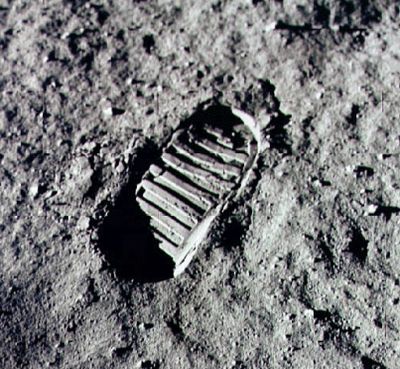Dust clouds detected on moon from debris’ impact

Scientists have found vast clouds of moon dust floating above the lunar surface that grow each time there is a meteor shower on Earth.
The clouds are made of tiny particles of moon and space dust, and they do not look like clouds on Earth. In fact, researchers say they are not visible to the human eye unless they catch the sunlight just right.
A new study in Nature finds that while these lunar dust clouds are ever present, they do grow and shrink.
Each time the Earth and moon system hurtles through a stream of debris left in the wake of a comet, the Earth gets a night-time meteor shower show and the moon’s dust clouds grow, temporarily, more dense.
“The Geminid meteor shower generates shooting stars on Earth, but they can’t do that on the moon,” said Mihaly Horanyi, a physicist at the University of Colorado, Boulder, and the first author on the paper. “They hit the surface on the moon and increase the dust density for a few days.”
The meteors that streak across the night sky occur when small bits of space dust burn up in the Earth’s atmosphere. The frequency of shooting stars increases when the Earth moves through a particularly dusty patch of our solar system, but on average, scientists estimate that the Earth is bombarded by 100 tons of cosmic detritus every day.
The moon is smaller than the Earth, so researchers estimate that it encounters 5 tons of space dust on a daily basis. But because it has almost no atmosphere, those particles slam directly in the deep powder on the lunar surface, each impact causing a mini-explosion that sends some of that moon powder into space.
These impacts have enough energy to cause lunar dust to rise up to 125 miles above the moon’s surface, but the ejecta is not moving fast enough to escape the moon’s gravity entirely, Horanyi explained. Eventually, the dust particles fall back down, coating the moon once again.
“This is day in and day out,” he said. “It is continuously ongoing. Every impact is just a little speck of dust being replaced, but eventually, this process will erase the footprints of the first astronauts to step on the moon.”
The research team also notes that the cloud of dust is not totally symmetrical around the moon.
“The lopsided part was kind of a surprise from nature,” said Jamey Szalay, a fourth-year graduate student at the University of Colorado, Boulder, who worked on the study.
The scientists explain that one side of the moon – what Szalay calls “the front windshield” – is more likely to get hit by especially fast moving particles that come from comets. Because these particles are moving at extra high speeds, they cause more dust to be shot off the moon when they strike. That leads to a dust cloud that is more dense than on the “rear windshield” side of the moon.
Nearly identical ejecta clouds were first observed by a dust detector on NASA’s Galileo spacecraft around the ice moons of Jupiter, but scientists were not sure if our own rocky moon would exhibit the same phenomena.
To find out, the Lunar Dust Experiment, or LDEX, instrument was included in NASA’s Lunar Atmosphere and Dust Environment Explorer, or LADEE, mission that launched in September 2013.
After arriving at the moon, LADEE went through a testing period at 155 miles above the surface, and even at that height, LDEX was able to detect evidence of a lunar dust cloud.
Over the course of the mission, LADEE spiraled closer and closer to the moon’s surface. The researchers say that the dust cloud was as close as 1/3 of a mile above the moon, and that it was more dense closer to the surface.
The scientists say it is likely that all airless bodies in the solar system have dust clouds – including the moons of Mars and Mercury as well as asteroids.
Zoltan Sternovsky, a professor at University of Colorado, Boulder, who also worked on the study, added that future missions to these bodies could scoop up these ejected dust particles and figure out their composition.
“It means you can analyze surface material without having to land on a surface,” he said.